What's Hybrid PCB and different Types?
Hybrid PCB: Structure, History, Features, Benefits, and Types
Printed Circuit Boards (PCBs) have come a long way since their invention in the 1940s. Over the years, PCBs have undergone several transformations, from single-layer to multi-layer boards, and now, hybrid PCBs. A hybrid PCB is a combination of two or more PCB substrates, usually a high-frequency material and a low-cost standard material, in a single board. Hybrid PCBs offer several advantages, making them a preferred choice for many high-frequency applications. This article will explore the structure, history, features, benefits, and different types of hybrid PCBs.
Structure of Hybrid PCBs
A hybrid PCB typically consists of a high-frequency material, such as Rogers or Taconic, and a low-cost standard material like FR-4, combined to form a multi-layered PCB. The high-frequency material is used in the inner layers of the board, while the outer layers are made of standard materials. The high-frequency material provides superior performance in terms of signal transmission, while the outer layers provide mechanical support and electrical insulation. Here is picture for your reference.
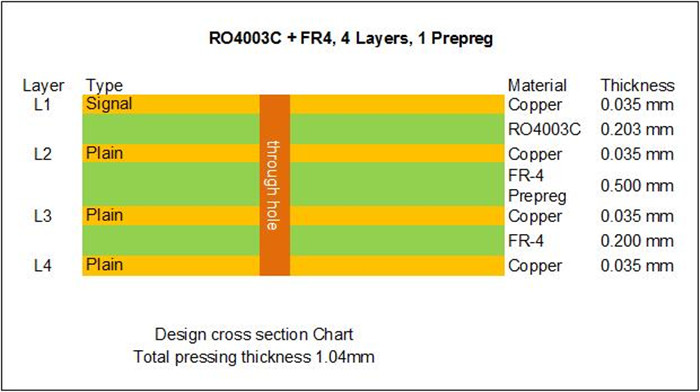
History of Hybrid PCBs
Hybrid PCBs came into existence when PCB manufacturers realized the limitations of traditional PCB substrates in high-frequency applications. The first hybrid PCBs were made by combining ceramic substrates with organic materials to produce multi-layered PCBs that could handle higher frequencies. Today, hybrid PCBs are used in a wide range of applications, including aerospace, defense, telecommunications, and medical industries.
Features of Hybrid PCBs
One of the key features of hybrid PCBs is their ability to handle high-frequency signals without signal loss or interference. Hybrid PCBs offer low dielectric loss, low insertion loss, and high thermal conductivity, making them ideal for high-frequency applications. They also provide mechanical strength and stability, as well as electrical insulation, making them suitable for harsh environments.
Benefits of Hybrid PCBs
The primary benefit of hybrid PCBs is their ability to combine the advantages of two or more materials into a single board. This enables designers to achieve the desired electrical and mechanical properties without compromising on cost. Hybrid PCBs offer better signal transmission, thermal management, and mechanical strength than traditional PCBs. They also offer improved reliability, reduced weight, and smaller size, making them ideal for space-constrained applications.
Types of Hybrid PCBs
There are several types of hybrid PCBs, including:
RO4350B+FR4 Hybrid PCB: This type of hybrid PCB combines the high-frequency properties of RO4350B with the low-cost standard material FR-4. RO4350B is a ceramic-filled hydracarbon material that offers excellent electrical performance, while FR-4 provides mechanical support and insulation. RO4350B+FR4 hybrid PCBs are commonly used in RF amplifiers, filters, and power dividers.
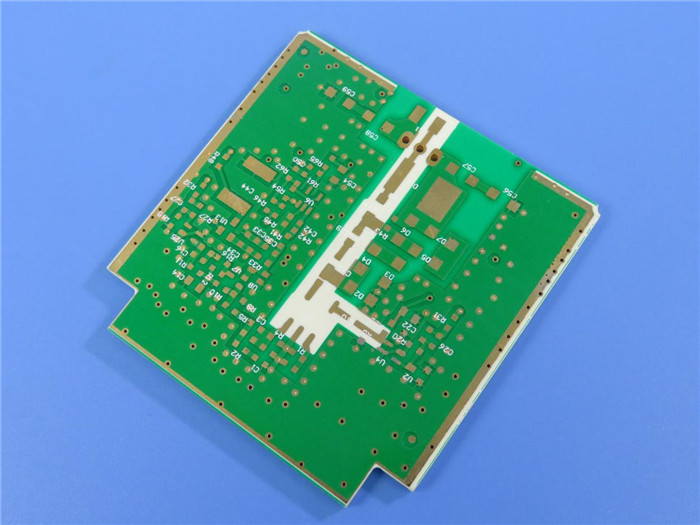
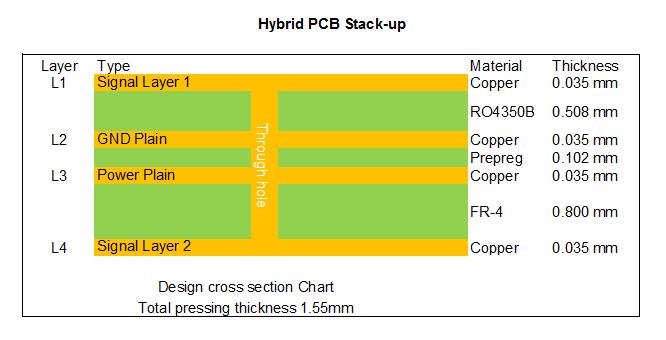
RO4003C+FR4 Hybrid PCB: This type of hybrid PCB combines the high-frequency properties of RO4003C with FR-4. RO4003C is a ceramic-filled hydracarbon material that offers superior performance at high frequencies, while FR-4 provides mechanical support and insulation. RO4003C+FR4 hybrid PCBs are commonly used in high-speed digital applications, such as computer motherboards and routers.
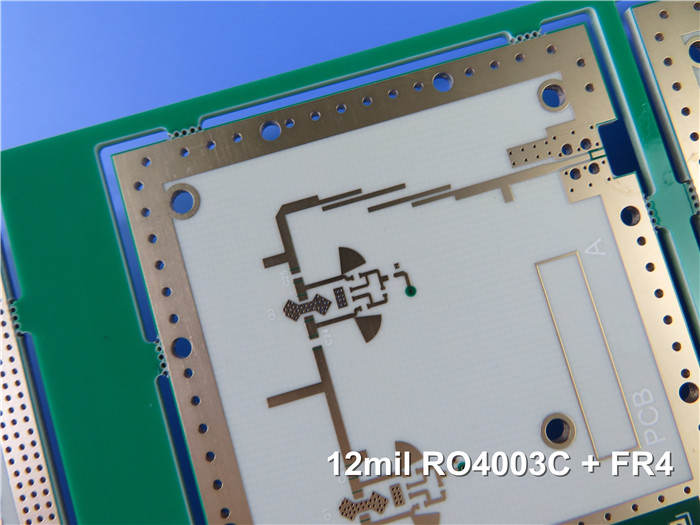
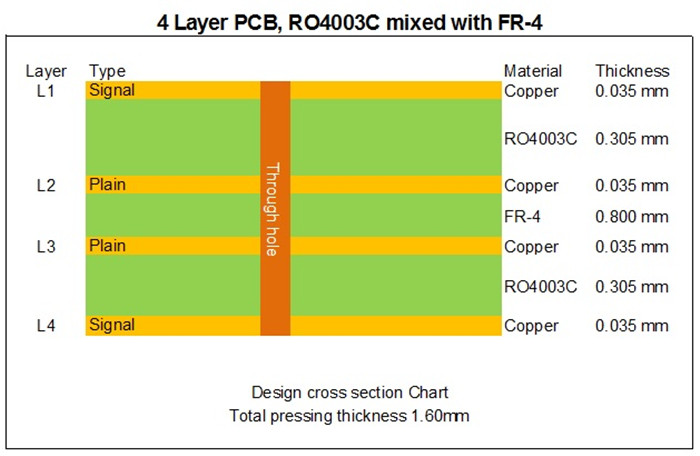
RT/duroid 5880+FR-4 Hybrid PCB: This type of hybrid PCB combines the high-frequency properties of RT/duroid 5880 with FR-4. RT/duroid 5880 is a microfiber reinforced PTFE composite that offers excellent electrical performance, while FR-4 provides mechanical support and insulation. RT/duroid 5880+FR-4 hybrid PCBs are commonly used in high-frequency applications, such as radar systems and satellite communications

 Call Us Now !
Tel : +86 755 27374946
Call Us Now !
Tel : +86 755 27374946
 Order Online Now !
Email : info@bichengpcb.com
Order Online Now !
Email : info@bichengpcb.com


















